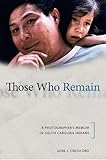Those Who Remain A Photographer's Memoir of South Carolina Indians / Gene J. Crediford.
Material type: TextSeries: Publication details: Tuscaloosa : University of Alabama Press, (c)2011.Description: 1 online resource (408 pages)Content type:
TextSeries: Publication details: Tuscaloosa : University of Alabama Press, (c)2011.Description: 1 online resource (408 pages)Content type: - text
- computer
- online resource
- 9780817381202
- E78 .T467 2011
- COPYRIGHT NOT covered - Click this link to request copyright permission: https://lib.ciu.edu/copyright-request-form
| Item type | Current library | Collection | Call number | URL | Status | Date due | Barcode | |
|---|---|---|---|---|---|---|---|---|
 Online Book (LOGIN USING YOUR MY CIU LOGIN AND PASSWORD)
Online Book (LOGIN USING YOUR MY CIU LOGIN AND PASSWORD)
|
G. Allen Fleece Library ONLINE | Non-fiction | E78 (Browse shelf(Opens below)) | Link to resource | Available | ocn882764543 |
Description based upon print version of record.
Includes bibliographies and index.
List of Illustrations; Preface; Acknowledgments; Introduction; 1. The Catawbas; 2. The Midlands; 3. The Santees; 4. The Edistos; 5. Varnertown; 6. The Waccamaws; 7. The Pee Dees; 8. The Lumbees; 9. The Red Road; Appendix: On Tribal Recognition; Notes; Bibliography; Index; CD Instructions; Those Who Remain Photo Captions; 1. Harold "Buster" Hatcher, chairman of the South Carolina Indian Affairs Commission (SCIAC) and elder chief of the Waccamaw (South Carolina) Indian people.; 2. Roger Hunnicutt, secretary/treasurer of the SCIAC and delegate from the Chickasaw Indian people.
3. James Caulder, vice-chair of SCIAC and chief of the Pee Dee Tribe of South Carolina (Marlboro County).4. John Abrams, director of South Carolina Native American Prison Program.; 5. Gene Norris, chief of Piedmont Native American Indian Association.; 6. Louie Chavis, chief of Beaver Creek Indians.; 7. David Cantee, Catawba Indian Nation.; 8. John Hilton.
Front row, from left to right: 1. Bonnie Hunnicutt, wife of Roger. 2. Carolyn Bolton, chief of the Pee Dee Indians of Upper South Carolina (Dillon County). 3. Lynnette Allston, chief of the Nottaway Indian Tribe of Virginia. 4. Mandy Oxendine Chapman, vice chief of the Sumter Band of Cheraw Indians. 5. Terence Little Water, executive director of SCIAC and chairlady of the American Indian Advocacy Services of South Carolina.1. Harold "Buster" Hatcher, chairman of the South Carolina Indian Affairs Commission (SCIAC) and elder chief of the Waccamaw (South Carolina) Indian people.
2. Roger Hunnicutt, secretary/treasurer of the SCIAC and delegate from the Chickasaw Indian people.3. Carolyn Bolton, chief of the Pee Dee Indians of Upper South Carolina (Dillon County).; 4. Gene Norris, chief of Piedmont Native American Indian Association.; 5. Terence Little Water, executive director of SCIAC and chairlady of the American Indian Advocacy Services of South Carolina.; 6. James Caulder, vice-chair of SCIAC and chief of the Pee Dee tribe of South Carolina (Marlboro County).; 7. Louie Chavis, chief of Beaver Creek Indians.; CD Photo Gallery
1. Sara Harris Ayers, Catawba potter, with some of her pottery at the Schiele Museum, Gastonia, North Carolina, 1986. In the background is a reconstruction of a pre-colonial Catawba dwelling.2. Foxx Ayers, husband of Sara, at South Carolina Archaeology Day during his and Sara's demonstration of pottery making, 1993. Foxx and Sara were born and reared on the Catawba reservation-near Rock Hill, South Carolina- but lived until their death in West Columbia, South Carolina.
3. Nola H. Campbell, Catawba potter, with deer antler used to smooth down her pots, 1990. Her home is just off the current reservation.
When DeSoto (in 1540) and later Juan Pardo (in 1567) marched through what was known as the province of Cofitachequi (which covered the southern part of today's North Carolina and most of South Carolina), the native population was estimated at well over 18,000. Most shared a common Catawba language, enabling this confederation of tribes to practice advanced political and social methods, cooperate and support each other, and meet their common enemy. The footprint of the Cofitachequi is the footprint of this book. The contemporary Catawba, Midland, Santee, N.
COPYRIGHT NOT covered - Click this link to request copyright permission:
There are no comments on this title.
